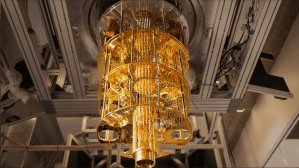IBM discovery pushes quantum computing closer to reality
Discoveries made by IBM this week may allow quantum computing to become more prevalent than ever before.
The company announced Thursday it has uncovered a way to detect both forms of errors that are commonplace in quantum computing. It also said it had assembled a new circuit design that would allow quantum computers to be built at a scale never before seen. Scientists describe their research in an article published this week in the peer-reviewed journal Nature Communications.
Quantum computers operate differently than regular computers by running on quantum bits, better known as “qubits.” While bits that run on regular computers are stored as a 0 or 1, qubits can be stored as a 0, 1 or both (denoted as “0+1”). The latter is known as a “superposition,” and it’s what allows quantum computers to work exponentially faster.
In the past, interference from heat, electromagnetic radiation and material defects could compromise quantum information, causing two types of errors: a bit-flip, where a qubit would change its numerical value, or a phase-flip, which would change the sign between a qubit in a superposition state.
Up until this point, researchers could detect a bit-flip or phase-flip, but never both. With IBM’s discovery, researchers can detect both types of errors, allowing quantum computers to choose the correct solution from millions of possibilities much quicker than a conventional computer.
“Up until now, researchers have been able to detect bit-flip or phase-flip quantum errors, but never the two together,” said Jay Gambetta, a manager in the IBM Quantum Computing Group, in a press release. “Our four qubit results take us past this hurdle by detecting both types of quantum errors and can be scalable to larger systems, as the qubits are arranged in a square lattice as opposed to a linear array.”
The discovery — partially funded through an Intelligence Advanced Research Projects Activity, or IARPA, program — could have “enormous potential” for a myriad of applications.
“Quantum computing could be potentially transformative, enabling us to solve problems that are impossible or impractical to solve today,” said Arvind Krishna, senior vice president and director of IBM Research, in a press release. “While quantum computers have traditionally been explored for cryptography, one area we find very compelling is the potential for practical quantum systems to solve problems in physics and quantum chemistry that are unsolvable today.”
Krishna said quantum computing could also have applications in material or drug design, as well as new uses in big data platforms.






